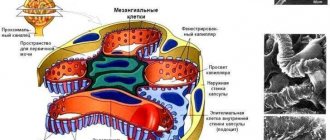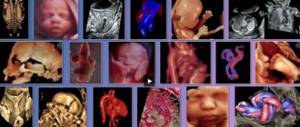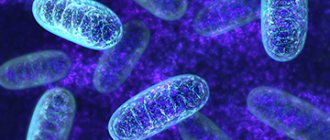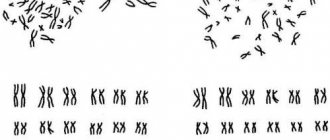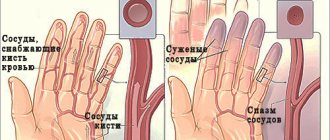Angelman syndrome is a disease classified as a genetic abnormality characterized by mental retardation and accompanied by seizures, chaotic hand movements, frequent laughter and smiles. This disease is also called “parsley” or “laughing doll” syndrome.
The scientific name Angelman syndrome was given in honor of the British pediatrician Harry Angelman. This disease was first described in 1965. According to various sources, the incidence rate is one case per ten to twenty thousand newborns. However, there is evidence that these figures are underestimated and more such people are being born.
Angelman syndrome - what is it?
This pathology is a congenital disease. It develops in utero. This disorder was first described by a British pediatrician, Dr. Harry Angelman, in 1965. Back then, patients with this diagnosis were called “doll children.” The disease itself was called “happy puppet syndrome.” This disease has other names. One of them is Parsley syndrome. This pathology is accompanied by delayed physical and mental development, walking on straight legs and laughing for no reason. Outwardly, patients with this diagnosis look like dolls.
Angelman syndrome - causes
To this day, scientists are studying the factors that provoke the development of this pathology. Angelman syndrome develops more often, if genetics are disturbed. In other words, the likelihood of its occurrence increases when one of the parents has chromosomal defects. However, Angelman syndrome, Parsley syndrome, and the laughing doll syndrome can also appear spontaneously in a baby whose parents are completely healthy.
The following factors have a teratogenic effect on a child:
- bad habits of a pregnant woman;
- long-term use of psychotropic drugs by parents;
- strong feelings of the expectant mother, provoked by grief or excessive stress;
- an inflammatory process that affects the reproductive system of a pregnant woman;
- stay of the expectant mother in a zone of increased radiation radiation.
Angelman syndrome - type of inheritance
This pathology occurs due to a disturbance in the process of chromosome division. Angelman syndrome has a karyotype of 46 XX or XY. Defects are found in the 15th chromosome. The mutation manifests itself as follows:
- Deletion
is the loss of a piece of chromosome. Patients with this disorder suffer from severe mental retardation. These children in most cases cannot walk or talk. In addition, such patients are often overcome by epileptic seizures. - Duplication
is the appearance of extra genes. If Angelman syndrome is diagnosed, patients are more likely to die in infancy. Sometimes such people survive until puberty. - Inversion
is a defect in which part of a chromosome is missing. In this case, the genes are located in the reverse sequence. - Translocation
- part of a chromosome is attached to another. - Uniparental disomy
is a disorder in which a child inherits two copies of the father's set of chromosome 15. He does not receive maternal benefits.
Diagnostics
The syndrome is diagnosed by genetic analysis (chromosome 15), recommended for newborns with reduced muscle tone (hypotonicity), delays in the development of gross motor skills and speech development. Parents and doctors should pay attention to cases of small tremors, chaotic, jerky movements of the limbs, gait with stiff legs; in some cases, a specific facial expression, too frequent laughter.
Possible analysis methods: fluorescence in situ hybridization process, DNA methylation in the 15q11-q13 region, imprinting center mutation analysis, direct mutation analysis of the UBE3A
.
Angelman syndrome in children - symptoms
The first signs of a pathological disorder begin to appear at the age of 6 months. As the baby grows, they become more distinct. Parsley syndrome symptoms are as follows:
- Group of physical signs.
Patients diagnosed with this condition have vision problems. More often it is strabismus, the presence of spots on the iris. In addition, in such patients the proportionality of the body is disturbed: the head is small compared to other parts of the body. At the age of 12 months, another accompanying sign begins to appear - the baby opens his mouth wide and slightly sticks out his tongue. Some of these patients exhibit hypopigmentation of certain areas of the skin. - Neurological signs.
Patients experience sleep disorders. At the same time, disturbances in speech functions are noted. A child aged 3 years can often suffer from epileptic seizures. However, the severity and intensity of such signs decrease as the child grows older. - Psychological signs.
Patients have mental retardation and affective behavior.
Angelman syndrome - phenotypic features
This disease has its own clinical picture. Parsley syndrome is a disease accompanied by the following symptoms:
- severe developmental delay;
- tremor;
- imbalance;
- increased thirst;
- increased chewing movements;
- flat palms;
- problems with fine motor skills (difficulty fastening buttons and zippers);
- uncontrolled urination;
- excess weight;
- pointed chin;
- the lower part of the jaw protrudes slightly forward;
- rachiocampsis.
Angelman syndrome - diagnosis
This disease can be detected even before the baby is born. For this purpose, invasive or non-invasive diagnostics are used. In the first method, amniotic fluid is taken for research. Invasive diagnostics is considered unsafe, since there is a high risk of developing a uterine infection. In the second research method, Angelman syndrome in children is identified by blood donated by pregnant women. Geneticists analyze the biomaterial, study the structure of the baby’s DNA and determine whether there are deviations or not.
It is important for parents to closely monitor the condition of the baby and, if they detect the first warning signs, immediately seek medical help.
If parsley syndrome is previously diagnosed as a disease, the following study is prescribed to confirm the presence of pathology:
- general examination of the patient;
- psychiatrist consultation;
- neurological examination;
- laboratory diagnostics.
Who can have a child with Angelman syndrome?
Angelman syndrome occurs spontaneously and, theoretically, absolutely any child can be born with it. The risk of having a child with Angelman syndrome is high if one of his parents suffers from it (a case of the birth of a sick baby to a mother with a similar syndrome has been described). If a family has already had one child with Angelman syndrome, this does not mean that the next baby will also be sick; the risk of having a similar child again is only 1%. It should be noted that Angelman syndrome is affected by the presence of any chromosomal abnormalities in the parents.
Interesting facts: the son of Colin Farrell, a famous American actor, has Angelman syndrome. However, this feature does not at all prevent the boy’s parents from loving their child devotedly!
Angelman syndrome - treatment
To date, a miracle drug has not yet been invented that would help defeat this genetic disease. However, Angelman's disease requires symptomatic therapy, which alleviates the patient's condition. In this case, drug and non-drug treatment is prescribed. Parsley syndrome in children requires the following therapy:
- Anticonvulsants are prescribed.
Clonazepam, Convulex, Lamotrigine are most often prescribed. Such medications minimize the frequency and intensity of epileptic attacks. - Vitamin therapy is prescribed (elements of groups B, C, D and E).
This treatment strengthens the body's immune system. However, it reduces the effectiveness of antiepileptic drugs, so all prescriptions must be made by a doctor. - Therapy is prescribed to eliminate problems with the digestive tract.
This treatment involves taking laxatives (Fitolax or Senade) and probiotics (Hilak forte, Bifiform). - Sleeping pills are prescribed.
Most often, patients are prescribed Diphenhydramine or Melatonin. - Hormone therapy is indicated.
This treatment is aimed at correcting the behavior of patients. For example, the hormone secretin improves the digestion process, and oxytocin increases cognitive abilities and memory. - Physiotherapy will help in the fight against joint problems.
Paraffin baths, massage, magnetic therapy, electrophoresis, and aqua gymnastics can be prescribed.
Mental exercises for children with Angelman syndrome
For this disease, behavioral therapy, classes with a speech therapist, psychologist and speech pathologist are indicated. Children diagnosed with happy doll syndrome have severe speech impairments. Some of them have a limited vocabulary, and others even have difficulty producing individual sounds. All this creates obstacles in communicating with other people. Special training is used to socialize such patients. For example, they are taught sign language.
Classes with such children should be short (no more than 30 minutes), but regular: it is advisable that they be held every day. According to experts, you can start with finger painting. During such activities, the child calms down, gets acquainted with the color scheme and develops fine motor skills. He will complete his first drawing with the help of an adult, but in the future he will enthusiastically begin to create masterpieces himself. As soon as your baby masters the technique of finger painting, you can begin to learn how to hold the brush in your hand.
Since children with Angelman syndrome perceive information better when it is visualized, it is advisable to use flashcards and other visual aids when teaching them. For example, to explain to such a child the concepts of “big” and “small”, you can use a collapsible nesting doll. When a child first encounters such a visual aid, the adult must open the toy himself and comment on each of his actions. Then you can ask your child to do the same. Gradually the task becomes more complicated: for example, the baby must show where the big matryoshka is.
Treatment results in Germany
Tatyana (patient’s mother): “Our result: Violetta was diagnosed with Angelman syndrome (a genetic disease that was also confirmed by genetic research). After starting to take medication for sleep, the epileptic seizures, oddly enough, stopped, as my daughter began to sleep and her day-night routine was established.
We did not fly to Germany for the second time to select medications for epilepsy, because... There is simply no epilepsy now. They did an EEG - everything was quiet and calm in our daughter’s head. Our doctors said that it does not happen that the encephalogram changes so much within a month. Using GLORISMED, we sent the EEG results to the doctor in Berlin - the doctor also confirmed that there was no epileptic activity.
So much effort, nerves, money was spent in Russia... And here we were in Berlin for three days - and we were told how to continue to live and fight the now understandable disease!!!
Dear parents, do not waste time and money on examination and therapy in Russia or other (especially Asian) countries. Find the cause of the disease and then carry out the right therapy with the right doctors. Germany has the best doctors and diagnosticians. Believe me, when you know what exactly to treat, the treatment is cheaper and more effective!
About GLORISMED. I am very grateful to the staff. I'm glad I came across them. They answer all questions, organize and accompany you during your stay in Germany, constantly on the phone. They do everything competently and calmly in any situation.
Even when I am already in Russia, I constantly ask the employees questions about medications, communication with the doctor, etc. I receive answers quickly, and everything becomes clear. Just a low bow to the guys from GLORISMED, because we, mothers, have different moods, we need a solution here and now - and they are great at providing this solution!”
Epilepsy
Epilepsy. Epileptology. Treatment of children with epilepsy. Epilepsy belongs to the common neurological diseases of a special type that depress human life
Let us help you find the right solution in this difficult situation with your health.
Contact us in any way convenient for you: by phone , by email , by Skype online, by filling out the contact form .
Tell us your contact phone number, our employees will call you back and will gladly answer all your questions absolutely free of charge and guide you on the correct selection of a medical institution, recommend a competent specialist - a well-known doctor from one of the serious specialized German clinics, and also tell you the approximate cost treatment program that is required specifically for you or people close to you.
The consultation is absolutely free for you!
Angelman syndrome - life expectancy
Patients with this diagnosis need constant care, because even as they mature, they remain childishly naive, trusting and good-natured. Their life expectancy directly depends on how timely the diagnosis of Harry Angelman syndrome was made and the recommendations of the treating doctor are followed.
According to statistics, such patients live on average up to 35-50 years. However, this is not the limit: if Angelman syndrome is diagnosed, how long people live with this pathology can vary greatly. Some patients live up to 70 years.


